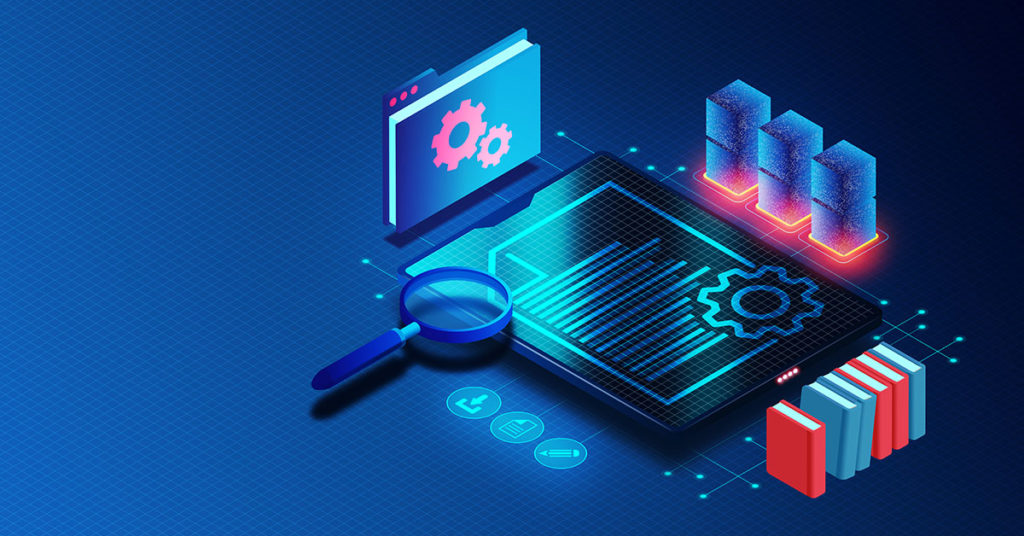The decision to update the latest Laserfiche version is not to be made lightly. As your solution provider, we put each version to the test. Our professional services team reviews the nuts, bolts, and user experience to find any issues and potential risks, then work with Laserfiche to resolve these concerns in point releases.
Let's dive into the administrative secrets of Laserfiche 11.
New Technical Requirements
The following are some of the new requirements for implementing a Laserfiche 11 system.
Operating System
With the release of Laserfiche 11, Laserfiche has permanently removed support for:
- Workstation: Vista, Windows 7, Windows 8
- Server: Windows Server 2008, Windows Server 2008 R2
End of support means that, with the release of Laserfiche 11, you will not be able to install Laserfiche 11 on servers or workstations running any of the listed operating systems.
If you are running a lower version of Laserfiche on the above operating systems, you can not update to Laserfiche 11 without upgrading the operating system.
The following operating systems will continue to be supported:
- Workstation: Windows 8.1, Windows 10
- Server: Windows Server 2012, Windows Server 2012 R2, Windows Server 2016, Windows Server 2019, and Windows Server 2022
Microsoft Office
As of Laserfiche 11, Microsoft Office 2010 is no longer supported. End of support means you will not be able to use Microsoft Office 2010 for any Laserfiche functionality through the Laserfiche Office Plug-in.
If the client is currently using Microsoft Office 2010 through the Laserfiche Office Integration, they will not be able to do so after upgrading to Laserfiche 11.
Microsoft Office 2013, Microsoft Office 2016, Microsoft Office 2019, and Microsoft 365 desktop will continue to be supported.
Microsoft SQL
With the release of Laserfiche 11, Laserfiche permanently removed support for Microsoft SQL Server 2008, Microsoft SQL Server 2008 R2, Microsoft SQL Server 2012, Microsoft SQL Server 2014 prior to Service Pack 3, SQL Server 2016, and SQL Server 2016 Service Pack 1.
End of support means that, with the release of Laserfiche 11, you will not be able to configure Laserfiche 11 using the above MS SQL versions.
If you are currently running a lower version of Laserfiche with one of the above SQL servers, you can not update to Laserfiche 11 without first upgrading your SQL Server.
Microsoft SQL Server 2014 Service Pack 3 or later, SQL Server 2016 Service Pack 2, SQL Server 2017, and SQL Server 2019 will continue to be supported.
Oracle
As of May 1, 2020, Laserfiche ended support for Oracle as a DBMS for Laserfiche systems. Database lookups throughout the Laserfiche product suite will continue to support Oracle databases. This announcement is limited to the Oracle storage for the Laserfiche Server and Laserfiche Workflow storage.
Browser
With the release of Laserfiche 11, Laserfiche has permanently removed support for Internet Explorer and Microsoft Edge Legacy. End of support means that, with the release of Laserfiche 11, you will not be able to use Internet Explorer version 11 and lower or HTML Edge for any Laserfiche functionality.
If you are using Internet Explorer 11 to access Laserfiche, this is not an option after updating to Laserfiche 11. Recent versions of Chrome, Firefox, Chromium Edge, and, in some cases, Safari will continue to be supported.
TLS Versions
As of January 1, 2021, Laserfiche Cloud services ended support for TLS versions 1.0 and 1.1. End of support means that the Laserfiche Cloud system will disable accepting connections using TLS 1.0 and 1.1. Organizations not using TLS 1.2 or later will be unable to access Laserfiche Cloud and may see “no response received from the server” errors when attempting to access Laserfiche Cloud resources.
Laserfiche hybrid features interact with the Laserfiche Cloud services and must support TLS 1.2 as described above. These features include CRM Integrations, Direct Share, Smart Invoice Capture, Workflow Bots, and other web APIs requiring TLS 1.2.
Integrations
We have found several integrations that do not support or are not tested to work with Laserfiche 11. If you have an integration purchased through MCCi, please get in touch with your account manager to confirm that your integration will work with Laserfiche 11.
Single Sign-On for Desktop Applications
The entire Laserfiche product suite now includes single sign-on and multifactor identification to provide a streamlined and secure sign–in for each user.
Direct Share
Laserfiche Direct Share allows you to share content from the Laserfiche repository with external users through the Web Client. When sending documents through Direct Share, the recipient receives a unique and anonymized URL to access the files for a specific number of days until the URL expires, even adding a password. In addition, the sender gets notifications when the content is viewed, and administrators can view who shared the documents, with whom, if, and when it was accessed.
Forms
Version 11 introduces some new and exciting features for Forms:
A new drag-and-drop form designer makes it easy to design and style your forms. Drag elements onto the canvas, apply a format, and set rules on the same page through tabs in the right pane. See this page for a comparison of available features between this designer and the classic forms designer.
Draft lockout ensures that a draft saved with an email address and password is secure by preventing repeated attempts to guess the email address and password. After the draft is locked, it will automatically be unlocked when the configured wait time is passed.
Administrators can edit variable values to fix countless issues with an instance, such as updating email addresses, fixing previous mistakes, and much more. If a Forms process kicks off a workflow and the value passed to the workflow is incorrect, this will not work. Be sure to update the values in both places.
Task Monitor page include the ability to:
- Filter tasks by action as defined in the process (Approve, Reject, Submit, All, etc.).
- Filter tasks by the assignee.
- Search tasks by the user or team name.
Distributed routing allows the service to run in a distributed environment, enhancing performance and stability significantly. Click here for more information.
When two or more users edit a classic form simultaneously, they will see a warning for unsaved changes by another user when they save the form.
Data Sources have enhanced security that allows you to specify groups of users with access to a specific data source instead of applying it to a Forms process.
Processes that may contain an issue are now suspended rather than terminated, allowing the process to be corrected and the instance to be recovered and resumed.
Audit Trail
MS SQL database is no longer required but utilizes the Laserfiche Full-Text Search engine.
Web Client
Conveniently work across the web client with the ability to save searches, view recent searches, set custom filters in an updated search bar, print documents in a batch, and view thumbnail images of documents in the folder browser.
Distributed Computing Cluster
Generate image pages for PDFs using the distributed computing cluster (DCC) via workflow to streamline high-volume capture workflows at scale.






